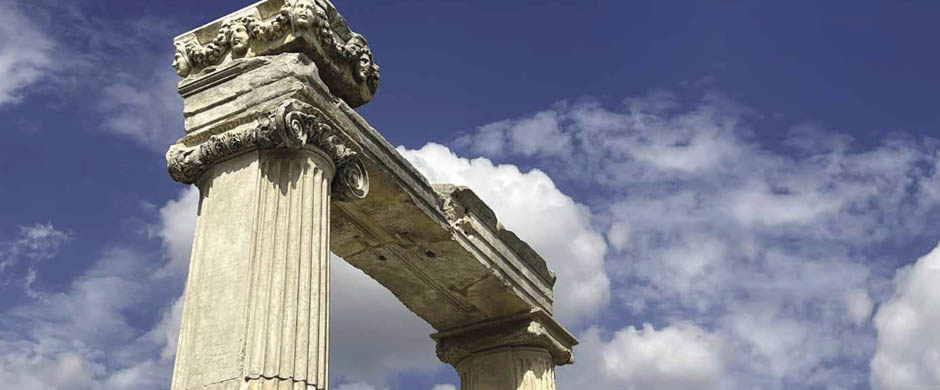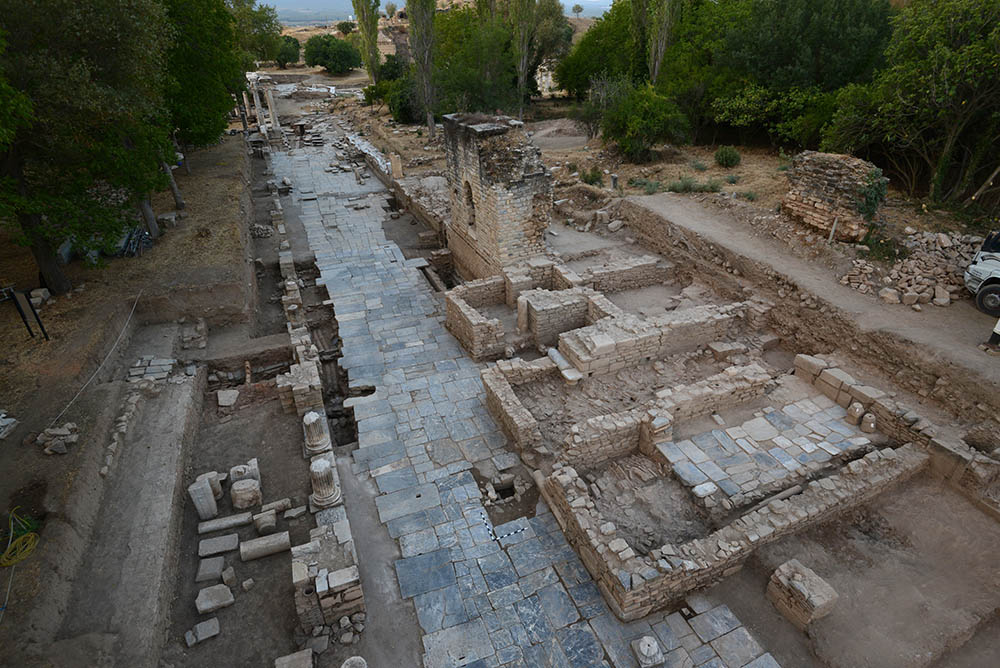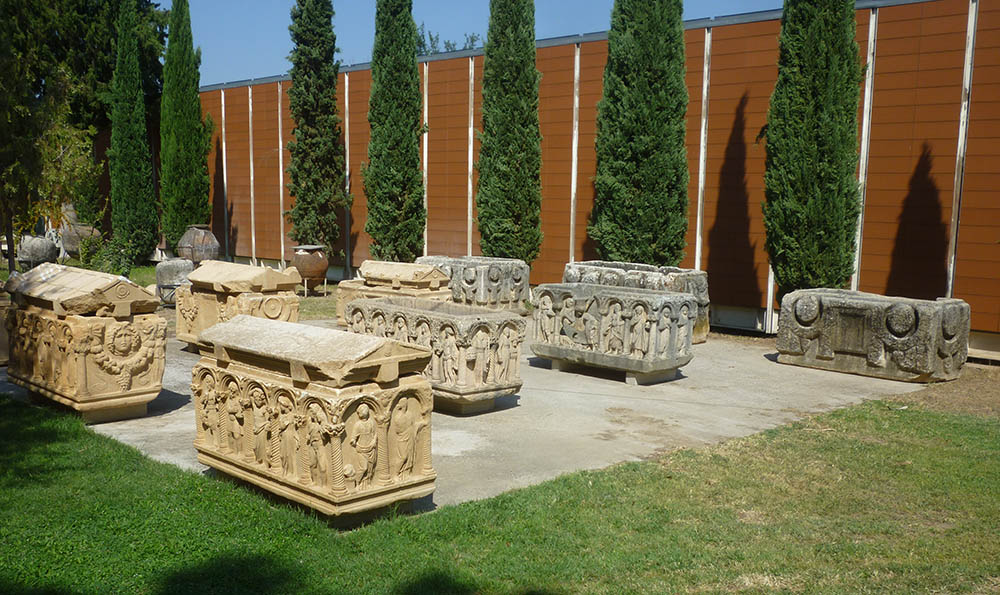 | In the Field
| In the Field

IFA Archaeology Journal
Archaeological Research at Aphrodisias in 2021
In spite of COVID, we had an outstanding nine-week season at Aphrodisias with a lot of exciting results achieved by a dedicated team of the vaccinated. The terrible fires that raged across Turkey came close but stayed away from the site. Our headline achievements were in the Civil Basilica and the Tetrapylon Street. Much documentation, publication study, and conservation werealso carried out, notably on our sarcophagi.We are most grateful to our sponsors for making this rewarding research possible.
Basilica. In the Civil Basilica, we completed the excavation of the splendid mosaics in the side aisles (dated in the AD 350s by the governor who paid for them) and a team of student architects documented them in detailed, hand-coloured drawings.We also mounted the first set of panels with the text of the Edict of Maximum Prices of the Emperor Diocletian (AD 301) –in Latin, Turkish, and English. The edict is an extraordinary list, originally inscribed on the façade of the Basilica,of 1,400 goods and services available in the empire – from chariots, lions, and slaves to footwear and the salaries of bath-attendants – all in a forlorn attempt to curb rampant inflation. The new panels constitute a unique display of this fascinating document.

Street. In the Tetrapylon Street, we worked especially on the period around AD 600 and the subsequent life of our highly unusual Dark Age Complex. The colonnades of the late Roman street were built in the sixth century AD, and we learned this year from its mason’s marks that the street paving was a one-shot project of the same time. No less than 540 mason’s marks were recorded by our epigraphists inscribed on the street’s large blue-grey marble pavers. The street buildings were destroyed in a huge earthquake of c. 620, after which the Dark Age Complex grew up on top of the collapsed debris,during the seventh and eighth centuries (these were the really dark centuries). The structure is a remarkable three-unit complex of some ambition among more vernacular housing.

There were lots of finds from our exciting Dark Age Complex: an inscribed votive altar, fragments of wall mosaic, a lead seal of a church notary, a pilaster capital with the figure of a peasant pulling a thorn from his foot, and a magnificent over-life-size portrait bust found re-used under a seventh-century wall. The bust represents a long-haired bearded philosopher who wears the rolled headband of a priest. It was made c. AD 400 and so was in use for a comparatively short time before it was recycled into the wall foundation. It is a high-grade piece of work and a classic Aphrodisian survival.
New sarcophagi. Three inscribed marble sarcophagi, found together in late 2020 about two kilometers to the east of the site, were recorded and set up in a new display of recently discovered sarcophagi next to the Aphrodisias Museum.

Our Supporters
Aphrodisias
Peter Ian Kuniholm
Lys McLaughlin Pike
Malcolm Hewitt Wiener Foundation, Inc.
Samothrace
Mary Lee Baranger
Andria Derstine
Maurice P. Rehm
Anne Leader
Loeb Classical Library Foundation
Nicholas J. Pisaris Foundation
Anonymous
Selinunte
Mary Lee Baranger
Julie E. Herzig and
Robert J. Desnick
Margaret M. Miles
Samuel I. Newhouse Foundation, Inc.
Victoria Newhouse
Alicia Volk and Norman H. Volk
Malcolm Hewitt Wiener Foundation, Inc.
Anonymous
Institute of Fine Arts Archaeology Fund
Rosamond Barber
Pepi Brooks
Peter Daniel De Staebler
Stacy C. Goodman
Ethelyn Adina Gordon
Lauren A. Gross
Rodica Krauss
A. Floyd Lattin
Carla Lord
Elizabeth Perce McGowan
Jaime L. Neary
Elizabeth A. Oustinoff
Anonymous
This list includes contributions to the projects received from October 31, 2020 – October 31, 2021.
Contact the Institute
Building Hours
Contact Information
If you wish to receive information on our upcoming events, please subscribe to our mailing list.



